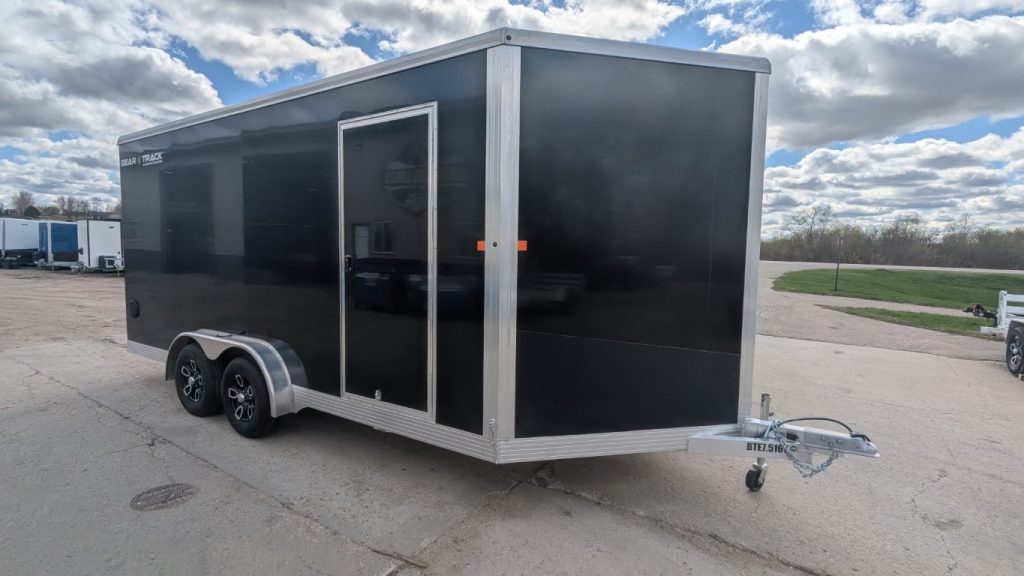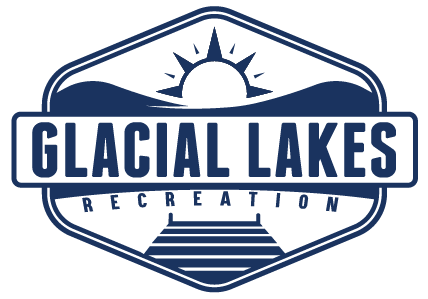What to Look for in an Enclosed Trailer: A Buyer’s Guide for Central Minnesota
If you’re in Starbuck, Alexandria, Morris, Glenwood, or anywhere nearby in central Minnesota, chances are you rely on your trailer to work as hard as you do—whether you’re hauling tools, toys, or machines. Choosing the right enclosed trailer can make all the difference in performance, durability, and safety.
At Glacial Lakes Recreation, we know the terrain, the weather, and how people in our communities use their trailers. If you’re shopping for a new enclosed trailer, here’s what you need to look for to get the most value and dependability from your investment.
1. Understand Trailer Siding Thickness: .080 vs .040 vs .030
One of the most overlooked features when comparing enclosed trailers is the thickness of the exterior aluminum siding. Here’s why it matters:
- .030 aluminum siding is common in budget trailers. It’s lightweight and gets the job done for light-duty hauling. However, it’s more prone to denting and “oil canning” (the wavy look that develops over time).
- .040 aluminum siding offers a noticeable step up in durability. It provides more strength without adding much weight.
- .080 aluminum siding is extremely thick and rugged. This helps your trailer withstand hail and road debris. It’s ideal for professional use or anyone who wants to protect their investment for the long haul.
Pro Tip: For Minnesota winters, thicker siding helps your trailer stand up better to salt, ice, and road debris.

2. Spring vs. Torsion Axles: What’s the Difference?
Another key component of a trailer is the axle system—this determines how smoothly your trailer rides and how it handles bumps, turns, and loads.
Spring Axels
- Simple leaf spring design
- More affordable
- Good for basic hauling and occasional use
- Slightly rougher ride
Torsion Axels
- Use rubber cords inside the axle housing for independent suspension
- Smoother, quieter ride
- Lower ride height and better handling
- Longer-lasting with less maintenance
If you’re frequently towing on rough roads between Morris and Glenwood, or hauling sensitive equipment, torsion axles are worth the upgrade.
3. Consider a Side-by-Side (SXS) Access Door
Do you haul a side-by-side UTV or ATV around Alexandria’s back roads or Starbuck’s trail systems? If so, a trailer with an SXS access door is a must. These doors:
- Make it easier to get in/out of your machine while it’s inside the trailer
- Offer quicker tie-down and loading/unloading access
- Can double as extra ventilation or an emergency exit
Not every enclosed trailer has this feature—ask us to show you models that do.
4. Tongue Weight: Why It Matters More Than You Think
Tongue weight is the downward force that the trailer’s tongue applies to your vehicle’s hitch. It’s a small number with a big impact. Here’s why it matters:
- Too little tongue weight? Your trailer may sway dangerously.
- Too much? You risk damaging your tow vehicle’s suspension or transmission.
As a rule of thumb, tongue weight should be about 10-15% of the total trailer weight. It’s especially important if you’re hauling heavy loads on country roads or highways throughout Minnesota. Our team at Glacial Lakes Recreation will help you understand your tow vehicle’s limits and pair it with the right trailer weight and balance.
5. Standard Ramp Gate vs. Heavy-Duty Gate
Choosing the right ramp gate for your enclosed trailer can save your back—and your equipment.
Standard Ramp Gates
- Suitable for lighter equipment like lawn mowers, small ATVs, or general cargo
- Easier to lift
- Lower cost
Heavy Duty Ramp Gates
- Built to handle side-by-sides, zero-turn mowers, or compact tractors
- Reinforced frame and cross members
- Better suited for commercial use or heavy terrain loading
If you’re loading frequently on uneven ground near Glenwood farm properties or on job sites around Starbuck, the heavy-duty ramp is a smart long-term investment.
6. What Length Trailer Do You Need?
Trailer length matters, and buying too small (or too large) can be a costly mistake. Here’s a quick guide to help:
- 10–12 ft trailers: Best for smaller ATVs, motorcycles, or general household moving
- 14–16 ft trailers: Ideal for UTVs, golf carts, small cars, or multi-purpose hauling
- 18–24 ft trailers: Great for car hauling, landscaping crews, or serious equipment users
Also consider:
- Interior height (especially for side-by-sides)
- Width (especially if you’re loading wide equipment or need to walk around it)
- Rear ramp clearance angles
Our team can help you measure your machine and choose the right trailer to fit both your gear and your garage.

Additional Features Worth Considering
While the big features matter, don’t overlook the “extras” that make your trailer more functional:
- V-nose front: Reduces wind drag and adds extra storage space
- D-rings & tie-downs: Keep your load secure on rough backroads
- Interior lighting: Helpful for early morning hunts or late-night unloading
- Aluminum wheels: Lightweight and rust-resistant
- Ventilation systems: Reduces interior heat build-up during hot Minnesota summers
Built for Central Minnesota Roads and Seasons
Whether you’re cruising between Alexandria and Starbuck, navigating gravel drives in Glenwood, or using your trailer to haul gear to the lake or jobsite, make sure it’s built to handle what Minnesota throws at it.
At Glacial Lakes Recreation, we hand-pick our enclosed trailer inventory to meet the needs of local residents and businesses. From farming and hunting to motorsports and contracting, we’ve got trailers that work as hard as you do.
Ready to Find the Perfect Enclosed Trailer?
We’re proud to serve our friends and neighbors in Starbuck, Alexandria, Glenwood, Morris, and beyond. Whether you’re just starting your search or you’re ready to buy, we’re here to help you find a trailer that checks every box—and lasts for years to come.
Contact Glacial Lakes Recreation today or stop by to see our current inventory. Let’s get you set up with the right enclosed trailer for your needs.
